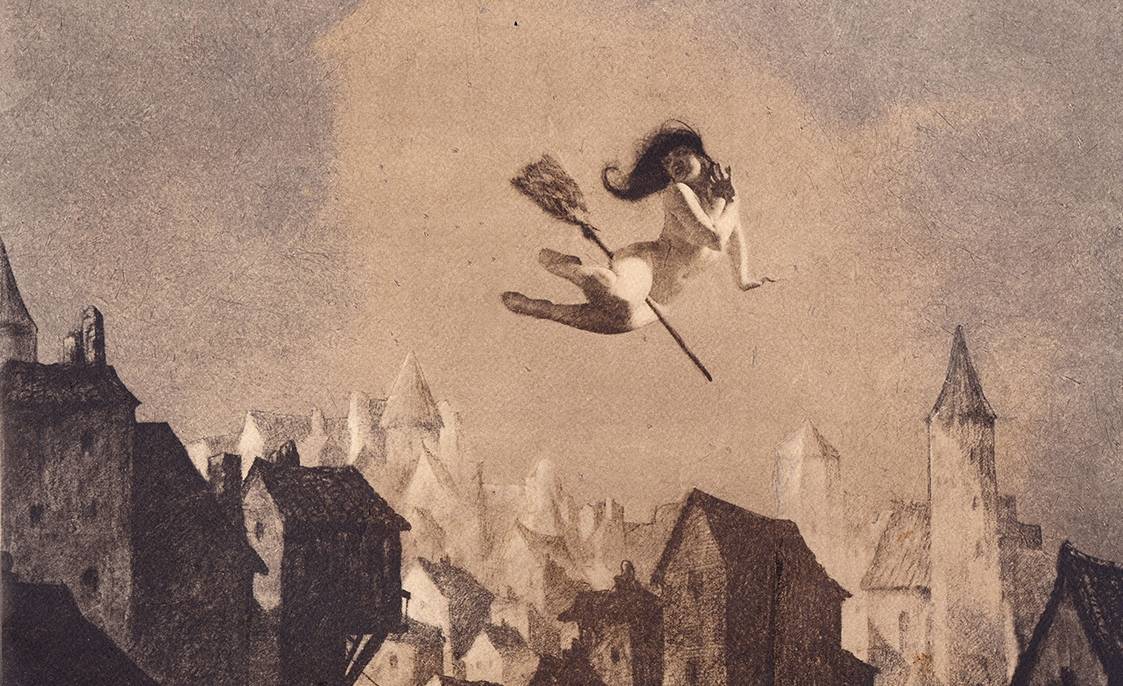An Exquisite Exhibition of Visionary and Esoteric Art
An anthology of the authentic fleurs du mal, extracted by expert gardeners from the shrubs of heaven and hell.
In some ways, all art forms are visionary, as they are born of or promote a vision. The Morbid Anatomy Museum in Brooklyn, New York, recently inaugurated a provocative show called Opus Hypnagogia: Sacred Spaces of the Visionary and Vernacular. It is one of the most interesting exhibitions of ‘marginal’ art and brings together paintings, photography, books and sculpture, as well as parapsychology and esoteric design.
 If this description appears vague, one only needs to look at the catalog of contemporary artists brought together by the fabulous curator Stephen Romano, such as Kris Kuksi, Kymia Nawabi, Martin Wittfooth, El Gato Chimney, Rithika Merchant, Jel Ena, Pulu Zhao, Rene Allain, David Molesky, Erna Kd, Lizz Lopez, Joseph McVetty and Barry William Hale. But the exhibition also includes pioneering works such as those by Charles Dellschau (venerated by some as a true mystic), and the photographs of witches by William Mortensen.
If this description appears vague, one only needs to look at the catalog of contemporary artists brought together by the fabulous curator Stephen Romano, such as Kris Kuksi, Kymia Nawabi, Martin Wittfooth, El Gato Chimney, Rithika Merchant, Jel Ena, Pulu Zhao, Rene Allain, David Molesky, Erna Kd, Lizz Lopez, Joseph McVetty and Barry William Hale. But the exhibition also includes pioneering works such as those by Charles Dellschau (venerated by some as a true mystic), and the photographs of witches by William Mortensen.
The exhibition picks up the theme of “hypnagogia,” the intermediate state between dreaming and waking. Taken in a metaphorical sense, it is about the instant of waking, not only physically, but also of consciousness, where the mind and perception open to superior or inferior realities but which re-contextualize our vision of reality. In an esoteric-mystical sense, the hypnagogical moment. It is the satori, that sudden enlightenment, that rose of Coleridge brought by strange means from paradise, but also of the terrifying visions from the depths of the human soul.
It is a truly magical exhibition, even in the literal sense: the jewel in the crown is a very rare 1849 copy of the grimoire Doktor Johannes Faust’s Magia naturalis. During the exhibition, the book of spells will be opened at different pages, in line with the dynamic spirit of Romano’s style as curator, where the pieces on show do not remain static but rather form a winding road so that the visitor will not walk the same way twice, like the proverbial river of Heraclitus.
The exhibition runs until October 15, 2015.


All images courtesy of the artist via the Morbid Anatomy Museum
- William Mortensen, Off for the Sabbot: A Pictorial Compendium of Witchcraft (ca. 1927)
- Martin Wittfooth, Shaman I, 2014
- El Gato Chimney, Untitled Triptych, 2015
Related Articles
Pictorial spiritism (a woman's drawings guided by a spirit)
There are numerous examples in the history of self-taught artists which suggest an interrogation of that which we take for granted within the universe of art. Such was the case with figures like
Astounding fairytale illustrations from Japan
Fairy tales tribal stories— are more than childish tales. Such fictions, the characters of which inhabit our earliest memories, aren’t just literary works with an aesthetic and pleasant purpose. They
A cinematic poem and an ode to water: its rhythms, shapes and textures
Here lies One Whose Name was writ in Water. - John Keats Without water the equation of life, at least life as we know it, would be impossible. A growing hypothesis holds that water, including the
Watch beauty unfold through science in this "ode to a flower" (video)
The study of the microscopic is one of the richest, most aesthetic methods of understanding the world. Lucky is the scientist who, upon seeing something beautiful, is able to see all of the tiny
To invent those we love or to see them as they are? Love in two of the movies' favorite scenes
So much has been said already, of “love” that it’s difficult to add anything, much less something new. It’s possible, though, perhaps because even if you try to pass through the sieve of all our
This app allows you to find and preserve ancient typographies
Most people, even those who are far removed from the world of design, are familiar with some type of typography and its ability to transform any text, help out dyslexics or stretch an eight page paper
The secrets of the mind-body connection
For decades medical research has recognized the existence of the placebo effect — in which the assumption that a medication will help produces actual physical improvements. In addition to this, a
The sea as infinite laboratory
Much of our thinking on the shape of the world and the universe derives from the way scientists and artists have approached these topics over time. Our fascination with the mysteries of the
Sharing and collaborating - natural movements of the creative being
We might sometimes think that artistic or creative activity is, in essence, individualistic. The Genesis of Judeo-Christian tradition portrays a God whose decision to create the world is as vehement
John Malkovich becomes David Lynch (and other characters)
John Malkovich and David Lynch are, respectively, the actor and film director who’ve implicitly or explicitly addressed the issues of identity and its porous barriers through numerous projects. Now










